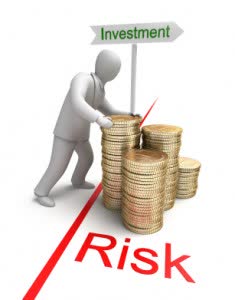Dividend Value Builder Newsletter
Systematic Risk, Unsystematic Risk, Probability, and Expected Value
There are many types of investing risk. I believe the ultimate risk is permanently losing your capital. In order to avoid the ultimate risk you need an to employ portfolio risk management strategies. Part of this plan is to understand systematic and unsystematic risk and the most effective approaches to mitigating these risks.
Systematic Risk
Systematic risk is risk associated with market returns. This is risk that can be attributed to broad factors. It is risk to your investment portfolio that cannot be attributed to the specific risk of individual investments.
Sources of systematic risk could be macroeconomic factors such as inflation, changes in interest rates, fluctuations in currencies, recessions, wars, etc. Macro factors which influence the direction and volatility of the entire market would be systematic risk. An individual company cannot control systematic risk.
Systematic risk can be partially mitigated by asset allocation. Owning different asset classes with low correlation can smooth portfolio volatility because asset classes react differently to macroeconomic factors. When some asset categories (i.e. domestic equities, international stocks, bonds, cash, etc.) are increasing others may be falling and vice versa.
To further reduce risk, asset allocation investment decisions should be based on valuation. I want to adjust my asset allocation target according to valuations. I want to overweight those asset classes that are bargains and own less or avoid investments which are overpriced. When mitigating systematic risk within a diversified portfolio, cash may be the most important and under appreciated asset category.
Unsystematic Risk
Unsystematic risk is company specific or industry specific risk. This is risk attributable or specific to the individual investment or small group of investments. It is uncorrelated with stock market returns. Other names used to describe unsystematic risk are specific risk, diversifiable risk, idiosyncratic risk, and residual risk.
Examples of risk that might be specific to individual companies or industries are business risk, financing risk, credit risk, product risk, legal risk, liquidity risk, political risk, operational risk, etc. Unsystematic risks are considered governable by the company or industry.
Proper diversification can nearly eliminate unsystematic risk. If an investor owns just one stock or bond and something negative happens to that company the investor suffers great harm. But if an investor owns a diversified portfolio of 20, 30, or 40 individual investments, the damage done to the portfolio is minimized.
The important concept of unsystematic risk is that it is not correlated to market risk and can be nearly eliminated by diversification.
Probability and Expected Value
The expected value or return of a portfolio is the sum of all the possible returns multiplied by the probability of each possible return. One form of risk is the amount of deviation and the probability of that deviation from the expected return.
Portfolio risk is reduced by mitigating systematic risk with asset allocation, and unsystematic risk with diversification. Mitigation of systematic and unsystematic risk allows a portfolio manager to put higher risk/reward assets in the portfolio without accepting additional risk. This is called portfolio optimization.
In other words, a manager is willing to accept a given amount of risk. The total risk of the portfolio is lowered through proper asset allocation and diversification. Now the the manager can add more aggressive investments to the portfolio and still maintain the given amount of risk he is willing to accept.
Conclusion
Systematic and unsystematic risks can be partially mitigated with risk management solutions such as asset allocation, diversification, and valuation timing. Used properly, a manager can increase portfolio returns and/or reduce risk to optimize an investment portfolio.
Related Reading:
5 Portfolio Risk Management Strategies
Perceived Risk vs. Real Risk: A Key to Successful Value Investing
Minimize Large Portfolio Drawdowns
Invest With Confidence in Less Time - Manage Your Portfolio Without Behavioral Errors

